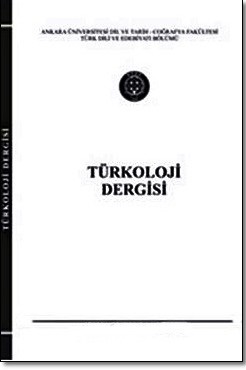Türk Müziği ve Türk Dilinin bazı operalarda kullanılışı
Bu araştırma XVII-XIX yüzyıllarda Batı Avrupa’da Türkleri ve Doğu’yu konu alan operalarda dekor ve kostümlere ek olarak Türk başrol karakterlerinde Türk müziği ve çalgı aletleri ile Türk dilinin nasıl kullanıldığını açıklamıştır. Batı müziğinde egzotizm ya da oryantalizm bağlamında incelenen bu konu makalede besteci J. B. Lully ve libretto yazarı J. B. Moliere’in “Le Burgeois Gentilhomme” (1670) “Kibarlık Budalası” adlı komik balesinde ele alınmıştır. Batı Avrupa sahne sanatlarında ilk kez Türklükle ilgili karakterlere Türk çalgıları ile birlikte yer veren eser “alla turca” tarzının başlangıcı kabul edilmiştir. Daha sonra Türkleri ve Doğu’yu konu alan birçok eserde bu unsurlar işlenmiştir. Sözkonusu araştırmada bu konu dönemin en başarılı bestecileri sayılan Viyana Klasikleri C. W. Gluck, J. Haydn ve W. A. Mozart’ın operalarından yararlanılarak örnekler ile açıklanmıştır. Bu makalede dönemin müzik estetiğine aykırı olduğu iddia edilen “alla turca” usulünün gerçekte Viyana müzik yazım tarzı içinde kaldığı, Türk çalgılarının ise, bugün Batı müziği ve orkestralarının parçası haline gelerek bu müziği zenginleştirdiği sonucuna varılmıştır. Türk başrol karakterleri için yazılan dilin Türk imajına verdiği zarar irdelenmiştir.
Anahtar Kelimeler:
Batı Müziği, Egzotizm, Opera, Alla Turca, Mehter, Çalgı
USAGE OF TURKISH LANGUAGE AND MUSIC IN SOME OPERA
This study takes up usage of Turkish music, costumes, language, decorative elements, instruments in the West European opera works on the Orient and the Turks from the seventeenth to the nineteenth century. In the western music, this subject which was studied within the context of exoticism or orientalism was addressed here through the works of composer J.B. Lully and librettist J.B. Molliere’s “Le Burgeois Gentilhomme”(1670), a comic ballet. In western performing arts, the first work containing the Turkish characters and musical instruments was regarded as the start of “alla turca” style. Later on these elements have been used in many works concerning the Turks or the orient. In this article, the subject matter is explained on the basis of works of C. W. Gluck, J. Haydn ve W. A. Mozart who are considered the best of their age in Viennese Classical music composers. In this article, it is concluded that alla turca style which was perceived as inconsistent with Viennese classical music style was, in fact, adopted and applied to the Viennese classical music style, and that the Turkish musical instruments which have become an integral part of western music today enriched it. Furthermore, it was stated the damaged given to the Turkish image in the west
Keywords:
Western music, Opera, Exoticism, Turkish language, Alla Turca,
___
- BAINES, Antony (2012). Brass Instruments Their History and Development. Londra: Dover Publishing.
- BECK, John.H. (1995). Encyclopedia of Percussion. I. Edition New York-London: Garland Publishing.
- BELLMAN, Jonathan (1993). The Style Hongrois in the Music of Western Europe. Boston:Northeastern University.
- BELLMAN, Jonathan (1998). The Exoticism in Western Music. Texas: G.S Typesetters.
- GLUCK C.W (1764). La Rencontre İmprévue Operası.Piano ed cantat Reduite Par J.B.Wererlin, Prex15 net. Paris, entente c ez Gustave Legouix
- HAYDN, J. (-1768) .Lo Speziale Operası. München-Duisburg: G. Henle Verlag 1959
- HUNTER, Mary (1998) “The Alla Turca Style in the Late Eighteenth Century:Race and Gender in the Symhony and the Seraglio” Ed. Bellmann, J. “The Exotic in Western Music” Northeastern University Press,U.S.A. (43-73)
- LOCK, Ralph P.A (2007). “ Broader View of Musical Exoticism” The Jounal of Musicology 57 (12.19.2007):477-521Yahoo 15.02.2014.
- http://www.academia.edu/3594684/_A_Broader_View_of_Musical_Exotici_.
- LULLY, J. B (1670) .Le Bourgeois Gentilhomme. LLWV 43 (1670), Copyright 2005-2006 ed.Nicolas Sceaux. Licensed under the Creative Commens Attribution 2.5 License http://www.free-scores.com/PUBLIC/MUTOPIA/ lwv43- a4.pdf, 14.05.2015.
- MOZART, W.A (1782-1986). Saraydan Kız Kaçırma Operası, Moskova, Muzıka.
- POWELL, John (2006) “Le Bourgeois Gentilhomme; Molière and Music ”, The Edinburgh Building, Cambridge CB2 2RU, UK, New York, Cambridge University Press, (121-38).
- SADIE, Stanley (1996). “Alla turca” The New Grove Dictionary of Music and Musicians. 19 cilt. London,Hong Kong, Macmillan.
- SCHMIDT-JONES, Catherine (10.05.2010), “Janissary Music and Turkish Influences on Western Music” Creative Commons Attributions.10.05.2010 http://cnx.org/content/m15861/latest/, 25.02.2013.
- ZOHN, Steven (2008). Music for a Mixed Taste Style, Genre and Meaning in Telemann’s Instrumental Works. New York, Oxford University.
- Başlangıç: 1964
- Yayıncı: Ankara Üniversitesi
